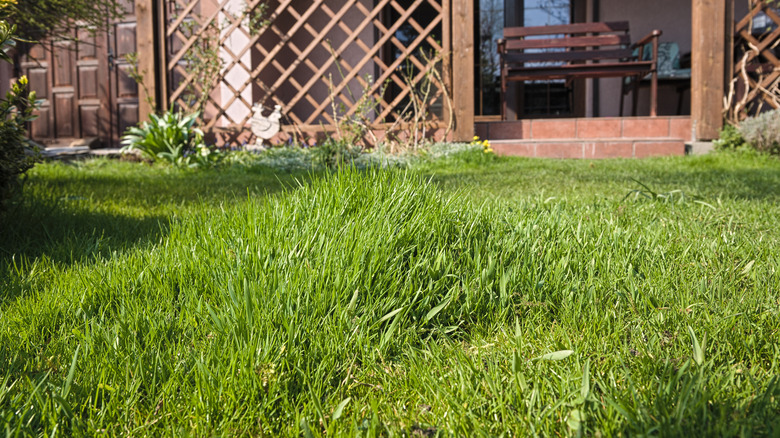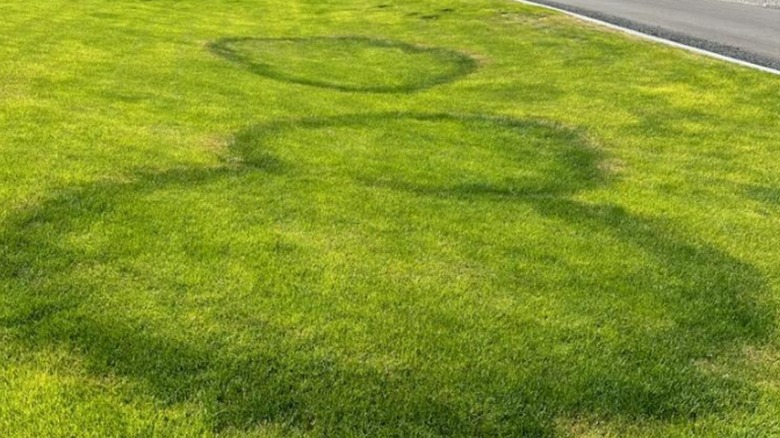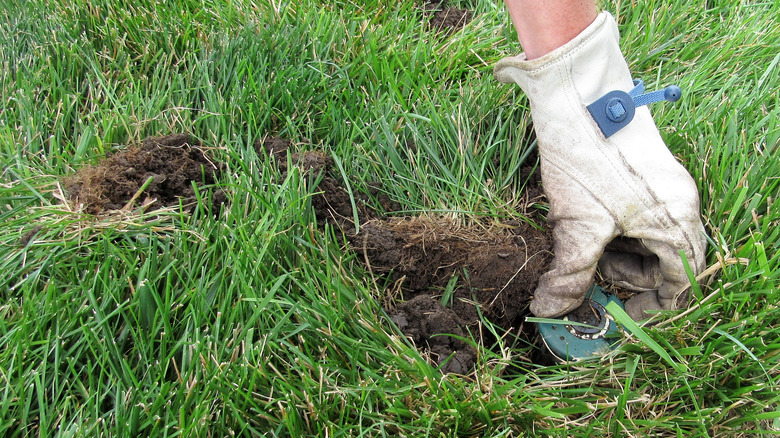There's A Reason Your Lawn Is Growing With Thick Patches In It
Human beings are creatures of habit and like consistency, and that includes having a nice, healthy, evenly-colored and level lawn. Mother Nature, being the kidder that she is, sometimes likes to remind us that imperfection is beautiful by way of sporadic patches of growth scattered throughout your turf. These thick patches can be caused by specific areas getting more sunlight, water, or nutrients. Additionally, it can be caused by an intrusion of weeds or other aggressive grasses, dog urine, birds scattering seeds, natural compost that is invisible to the naked eye, or even faulty irrigation.
These patches of dense grass might vary in color and texture compared to the rest of the lawn. Certain types of lawn grass, like creeping bentgrass, annual bluegrass, crabgrass just won't mix well together, and not only look unsightly but also can create tripping hazards that will gradually begin to grow in size over time.
How to remedy a patchy lawn
There are more than a few reasons why your lawn is sprouting random tufts of green hair that don't quite line up. If intrusive grass is the culprit, and it's not too sizable, you can manually remove it with a spade. Alternatively, you can use non-selective herbicides like glyphosates, which will kill off the patch and allow for new growth.
Dog urine is another issue that can cause your lawn to look uneven. One of the main ingredients in urine is nitrogen, which makes plants grow big and strong when applied in the proper amount. If Fido has a few favorite spots around your yard, and you notice the grass seems much happier where they've done their business, then you can most likely attribute this to their all-natural liquid fertilizer. To counterbalance this problem, you'll want to rinse the urine as soon as it comes into contact with your luscious lawn. Another option is to apply fertilizer to your entire turf to make it grow in evenly.
If tufts of grass are sprouting up and are accompanied by a ring of mushrooms, then it looks like you've got a fairy problem on your hands. Although the name suggests mischief from the magical world, fairy rings are created due to organic decaying matter below the thatching. If mushrooms accompany the discoloration, just bust them up and apply fertilizer to mask the discoloration.
Keep it localized
To make sure the above method works, you're going to need to get serious about targeting the affected areas only. Targeted application addresses the specific cause of the patches, and not just using a generic, universal cure-all method. If you need to use herbicides or other chemicals, always follow the instructions to prevent any accidental damage to your turf. It's also recommended that you routinely check the pH of your soil to make sure that there's an even balance of all the vital nutrients that your lawn needs. An overall rule of thumb is for your soil to maintain a pH between 6.5 and seven.
If you're still getting overgrowth in sporadic places around your lawn, you might also want to check to see if your sprinklers are working properly. Sometimes they can get knocked loose from mowing, dethatching, or by animals that dig underground. If this is the case, you'll want to call in an irrigation service technician to check things out. Remember that there's no harm in asking for help.


